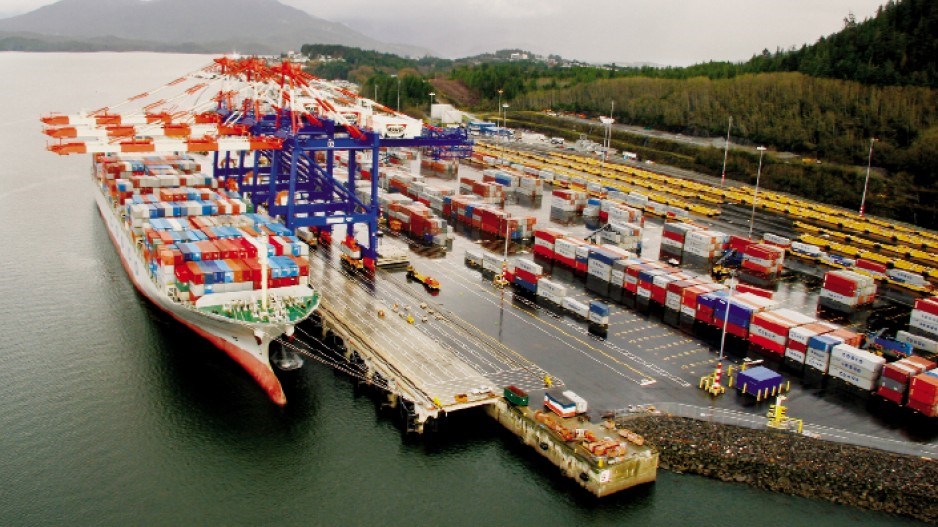Asian demand for B.C. goods is driving a surge in cargo volumes through the Port of Prince Rupert.
As of April 30, the port’s containerized cargo volumes have doubled year-to-date compared with 2011 levels. Overall, cargo volumes are up 14.4% year-to-date.
Ken Veldmanis director of public affairs for the Prince Rupert Port Authority. He cautioned that four months is a small sample size for extrapolating the port’s cargo growth rate, but added that the growth trend is clear.
“If you look at our numbers over the last few years, there has been a real steady increase as the value proposition that we have on this corridor becomes more well known and as the U.S. economy bounces back to a certain extent.”
What’s driving the growth?
“The most impressive thing from our perspective is the export volume, particularly on the container side,” he said.
“That’s a real reflection of continuing growth in primarily British Columbia wood-based products – mostly lumber and pulp – that are on their way to China.” Veldman noted that the port’s Ridley Terminalscoal terminal has started an expansion that will double its annual capacity to 24 million tonnes. He added that the customer base is already there for that capacity, with Ridley “fully booked out” for its new capacity.
Veldman added that an expansion plan for the port’s Fairview container terminal is undergoing environmental assessment.
“We’re hoping that that receives its permits by the end of the summer and the eventual development of that will increase our container capacity from essentially about 750,000 [twenty-foot equivalent units] annually to two million.
Port Metro Vancouver’s (PMV) cargo volumes have edged up over the first few months of the year. It’s forecasting a 3% increase this year over 2011, according to Katherine Bamford, PMV director of trade development.
Veldman said both ports are benefiting from Asian demand for B.C. products.
Are the two West Coast ports on the same growth trajectory?
“I think what does separate us from Vancouver is the capacity to significantly expand here,” Veldman said.
Earlier this month, the Port of Prince Rupert released an InterVISTAS Consulting Inc. economic impact study which showed that the port had created 2,200 full-time jobs over the past two years. (See “Port of Prince Rupert creates 2,200 jobs in two years” – Business in Vancouver; April 13.) •




